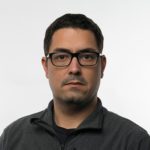Nonlinear extended blind end-member and abundance extraction for hyperspectral images
Publikasjonsdetaljer
Tidsskrift : Signal Processing , vol. 201 , p. 1–16–15 , 2022
Utgiver : Elsevier
Internasjonale standardnummer
:
Trykt
:
0165-1684
Elektronisk
:
1872-7557
Publikasjonstype : Vitenskapelig artikkel
Lenker
:
DOI
:
doi.org/10.1016/j.sigpro.2022....
Forskningsområder
Kvalitet og målemetoder
Har du spørsmål om noe vedrørende publikasjonen, kan du kontakte Nofimas bibliotekleder.
Kjetil Aune
Bibliotekleder
kjetil.aune@nofima.no
Sammendrag
Hyperspectral images had become an essential tool in different application frameworks, such as mineral exploration, food inspection, and medical assessment, among others. However, the interpretability of these images involves an initial processing stage to model the optical interaction and analyze the spectral information. In this work, we study nonlinear unmixing of hyperspectral images by a multilinear mixture model (MMM). In this sense, we propose a nonlinear version of the extended blind end-member and abundance extraction (NEBEAE) method for blind unmixing, i.e. estimation of the end-members, their abundances, and the nonlinear interaction levels. In the problem formulation, we include a normalization step in the hyperspectral measurements for the end-members and abundances to improve robustness. The blind unmixing process can be separated into three estimation subproblems for each component in the model, which are solved by a cyclic coordinate descent algorithm and quadratic constrained optimizations. Each problem is mathematically formulated and derived to construct the general nonlinear iterative unmixing technique. We evaluated our proposal with synthetic and experimental datasets from the remote sensing literature (Cuprite, Urban and Pavia University scene datasets) and a biomedical hyperspectral imaging application. In the validation stage, we compared NEBEAE with three state-of-the-art methods to show its advantages in terms of precision and computational time.
